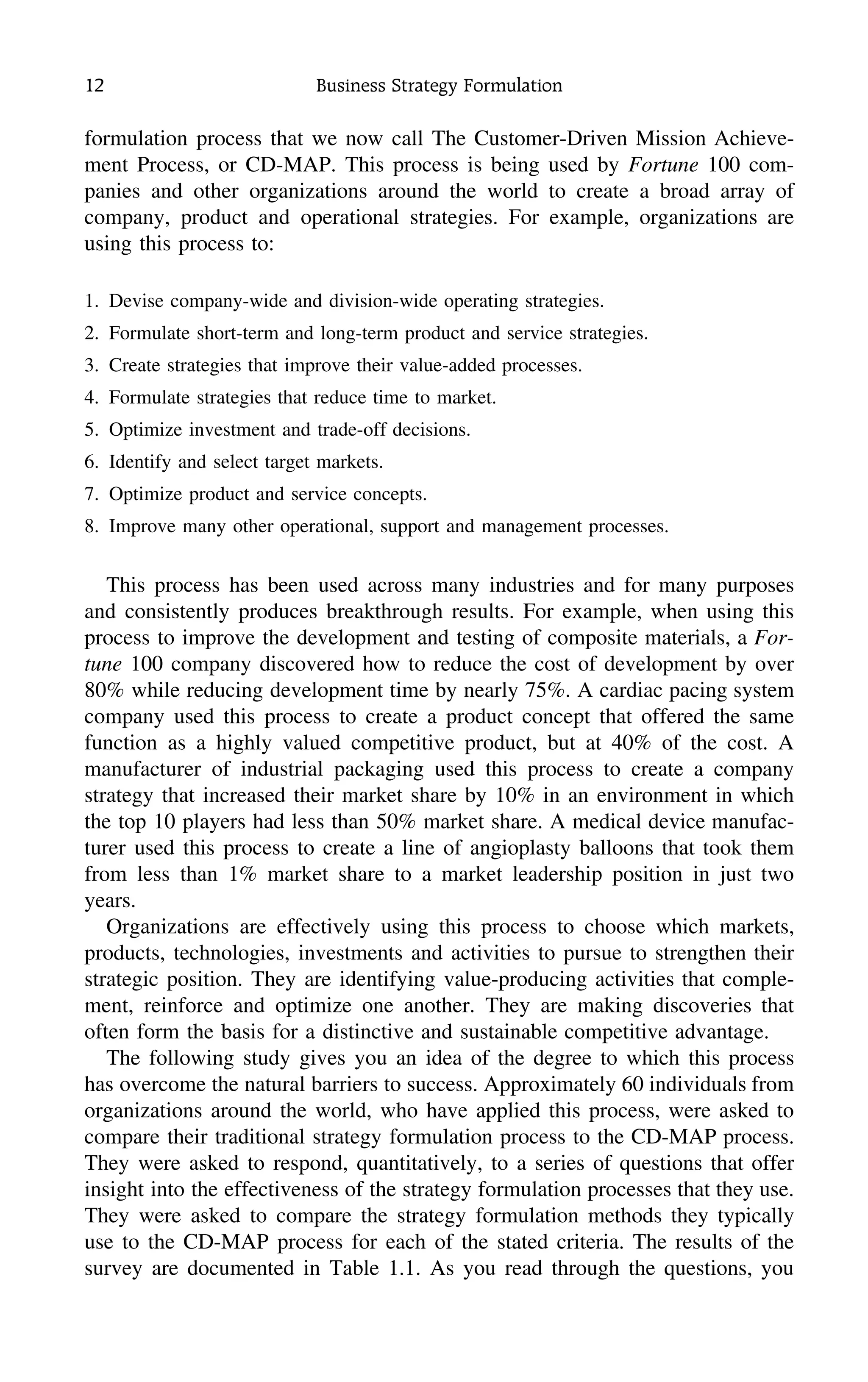This document introduces a book about a new process for business strategy formulation. It describes how the author developed this process over many years after observing strategic failures at IBM and other companies. The process is presented as a systematic way to formulate strategies based on facts, structure, and customer values rather than past successes, complaints, or reactions. Motorola used this process and found it helped focus investments on opportunities most likely to succeed.































































































































































































































